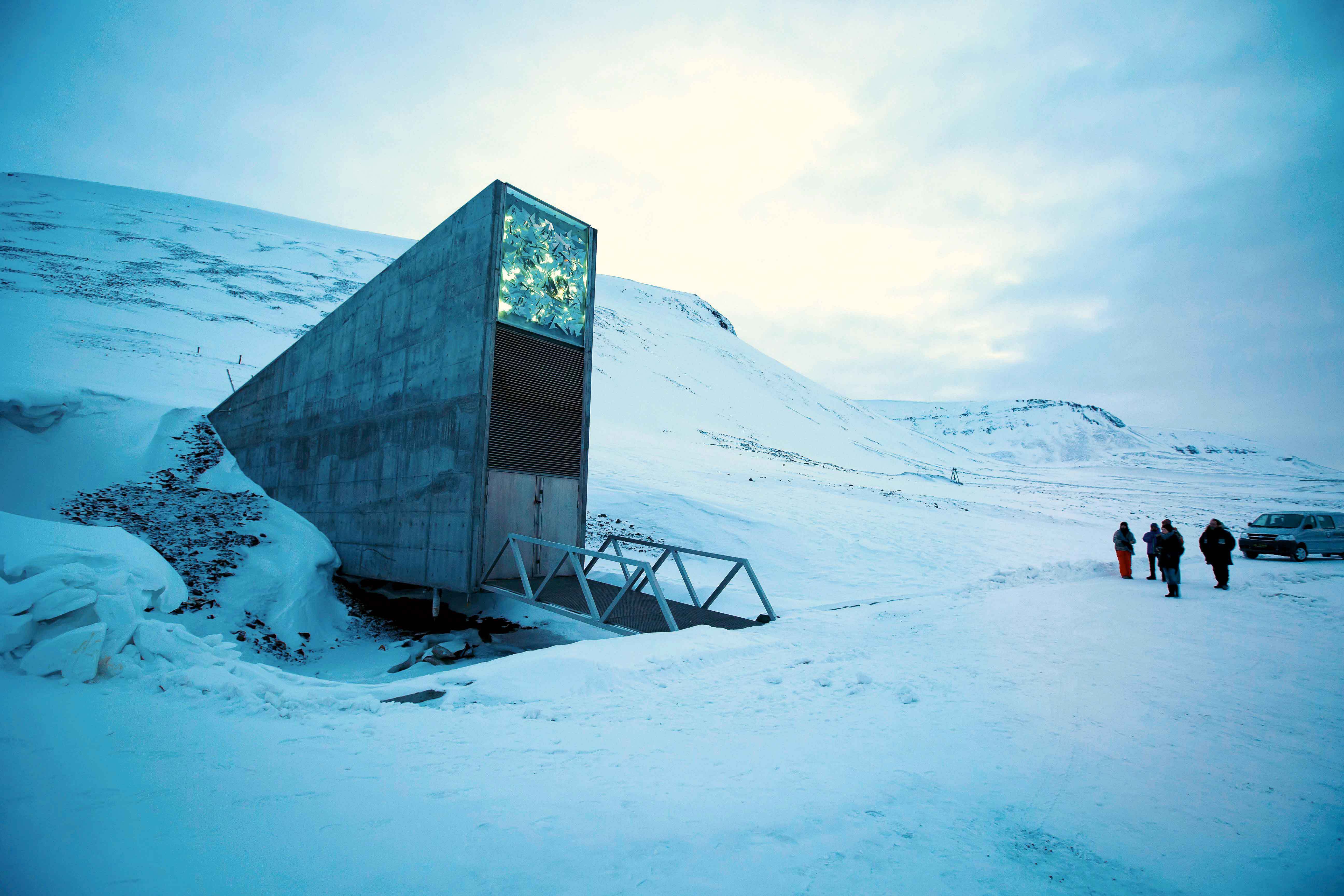Deep in the wet, green English countryside is a bunkerlike underground vault with airlocks and blast doors that can withstand fire, flood and most of the likeliest world-ending natural or man-made calamities. “It’s a bit like Noah’s Ark,” concedes John Dickie, head of collections at the Millennium Seed Bank (MSB). A remote extension of the Royal Botanical Gardens at Kew in London, that repository was designed to preserve genetic material from all the wild plants of the British Isles, and to accept native flora samples from many other nations for safekeeping.
Part of the same project is the Australian PlantBank at Mount Annan, New South Wales, while the UAE’s own Sharjah Seed Bank and Herbarium was established in 2009 with technical support from Dickie’s team. Other facilities operate at higher levels of security: China’s Germplasm Bank of Wild Species, built into a Kunming hillside; the Svalbard Global Seed Vault, a monolithic cold storage unit half buried in the ice near the North Pole, building a backup collection of essential crops; and the USA’s National Center for Genetic Resources Preservation, at Colorado State University, often referred to as the ‘Fort Knox’ of seed reserves.
According to Dickie, the concept behind these grew out of the ‘green revolution’ some 50 years ago. Then ground-breaking agricultural initiatives produced new high-yield, disease-resistant strains of wheat and other crops that soon covered the arable landscapes of Mexico, India, Brazil. “This basically meant spreading a single genotype over a wide area,” explains Dickie.
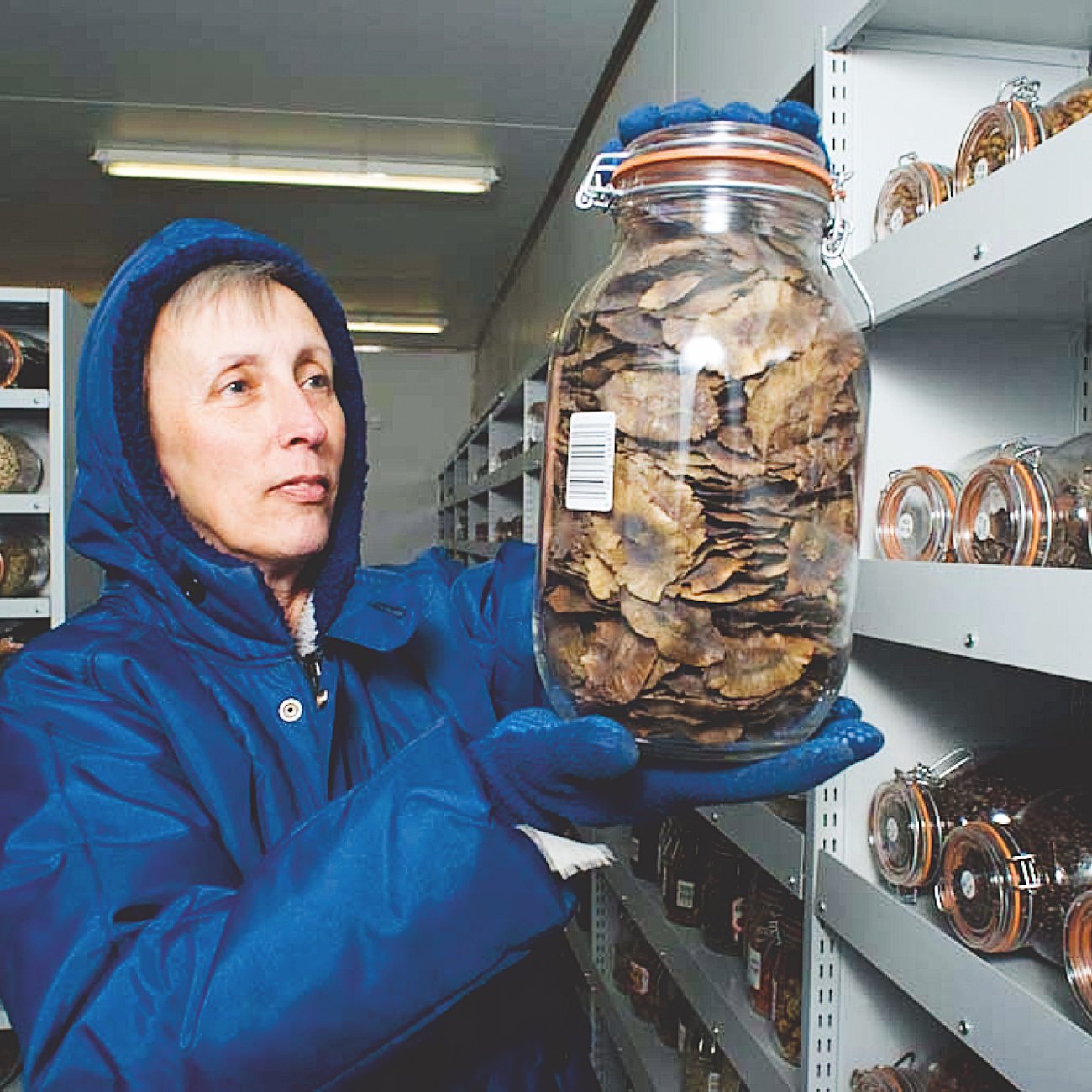
Inside a vault at MSB
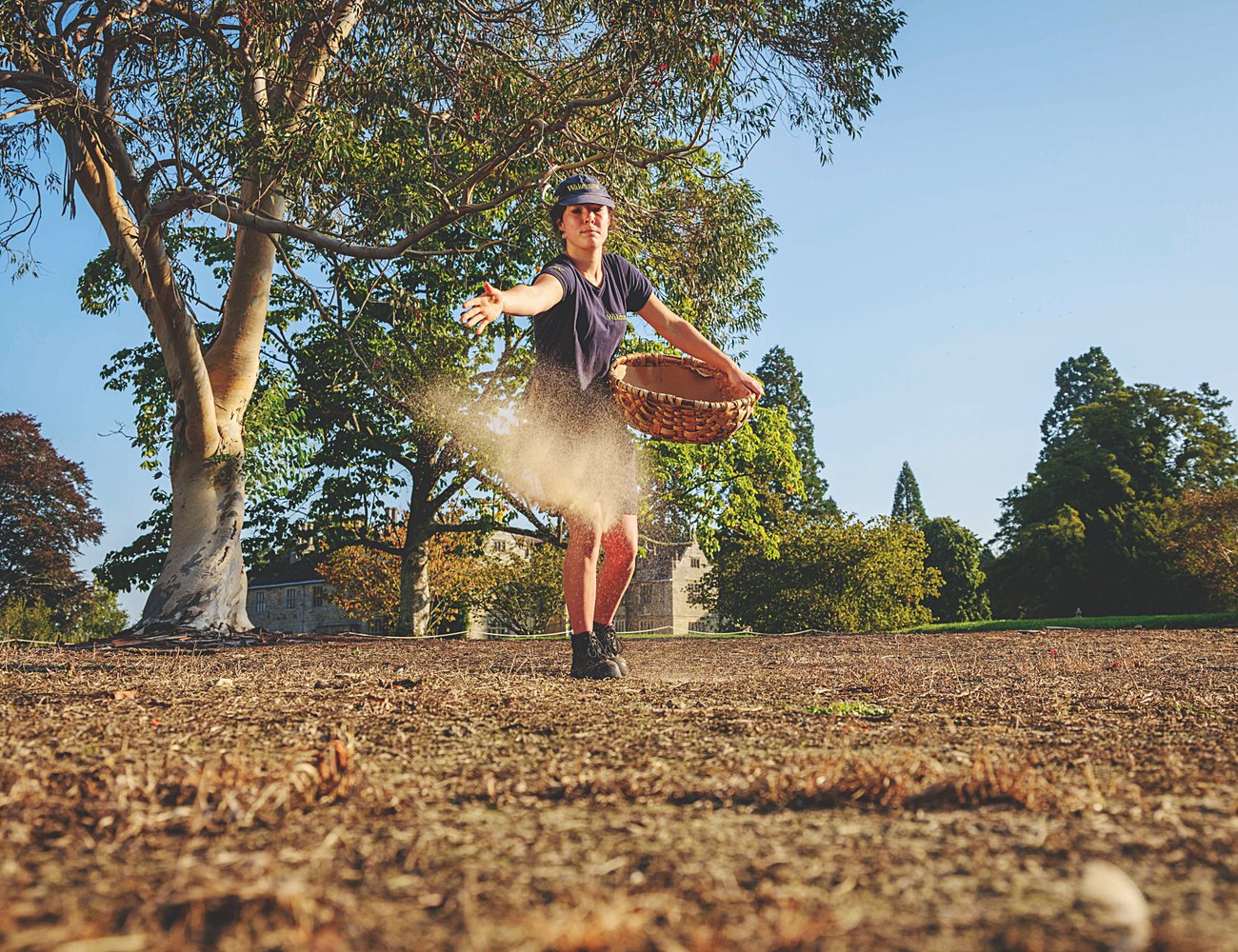
A botanical horticulturalist casts American prairie seeds across prepared ground
“There was serious concern that genetic diversity would be lost to these new high-yield varieties.” At around the same time, plant geologists began to think that seeds could have “considerable longevity … tens or possibly hundreds of years”, if they were kept sufficiently dry and cool. So, international institutes began to conserve both crops and wild plants in seed form, and Kew’s own collection was expanded into the Millennium Seed Bank at the turn of the 21st century.
The years since have begun to confirm some of the direst fears for the future of plant life, now being steadily erased by desertification, urbanisation, over-grazing and all the manifold threats of climate change. This has given a somewhat apocalyptic urgency to the work of the MSB and similar sites, though Dickie is keen to dispel images of his team busying themselves below ground in hazmat suits, with orders to re-seed the earth after a worldwide blight, or nuclear war.
“Well, we wear white coats and gloves,” he says, “and we use air extraction to help protect staff from allergic reactions or worse, as they come into contact with dust and spores from species that in many cases have never been examined before. But it’s not as if we have some kind of plan to lock ourselves in and come out when the coast is clear. Nothing as dramatic as that.”
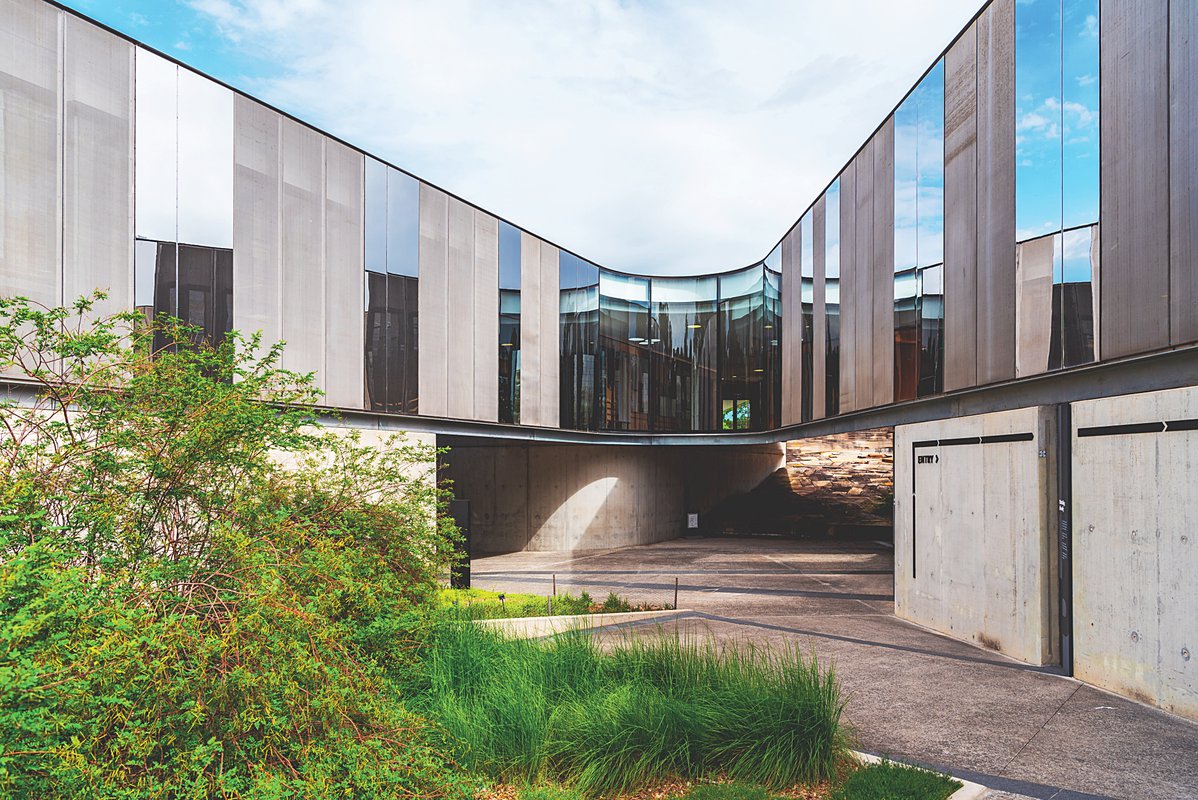
When it comes to climate change, food security and water security, there will be plant-based solutions and that is what we do.
If the worst did happen, he continues, the question would be: “Is there even an environment for these plants to go back into?” This worry may weigh heavily on some of his colleagues, he admits, but Dickie prefers to concentrate on immediate problems and solutions. The MSB serves as an active depository – drying, freezing and storing seeds (sometimes cryogenically) in moisture-proof lockboxes, the keys to which are held by the nations who own them. Withdrawals may be made for research purposes, or to replenish crops lost to regional conflict or disease. West African banana plantations have been ravaged by a fungal strain called Tropical Race 4, for example, and the MSB’s reserves of wild banana seeds were deployed in the effort to “breed out susceptibility to that virus”. Domestic bananas have no seeds, explains Dickie, so there is no real resilience where the same variety is grown across hundreds of hectares.
Also within the bank’s collection are seeds from plants now effectively extinct, including several grasses and a flower called the ‘interrupted brome’, formerly common to Southern English gardens but unseen in the wild since 1972. Dickie knows this kind of thing can capture popular imagination – the very thought of a subterranean vault for seeds vanished from the surface world, held in a building designed to outlast our historical moment, perhaps by hundreds of years. These seed banks could appear ancient wonders to some future civilisation; testaments to our ingenuity. Again, Dickie prefers to ground such visions in the present and the practical.
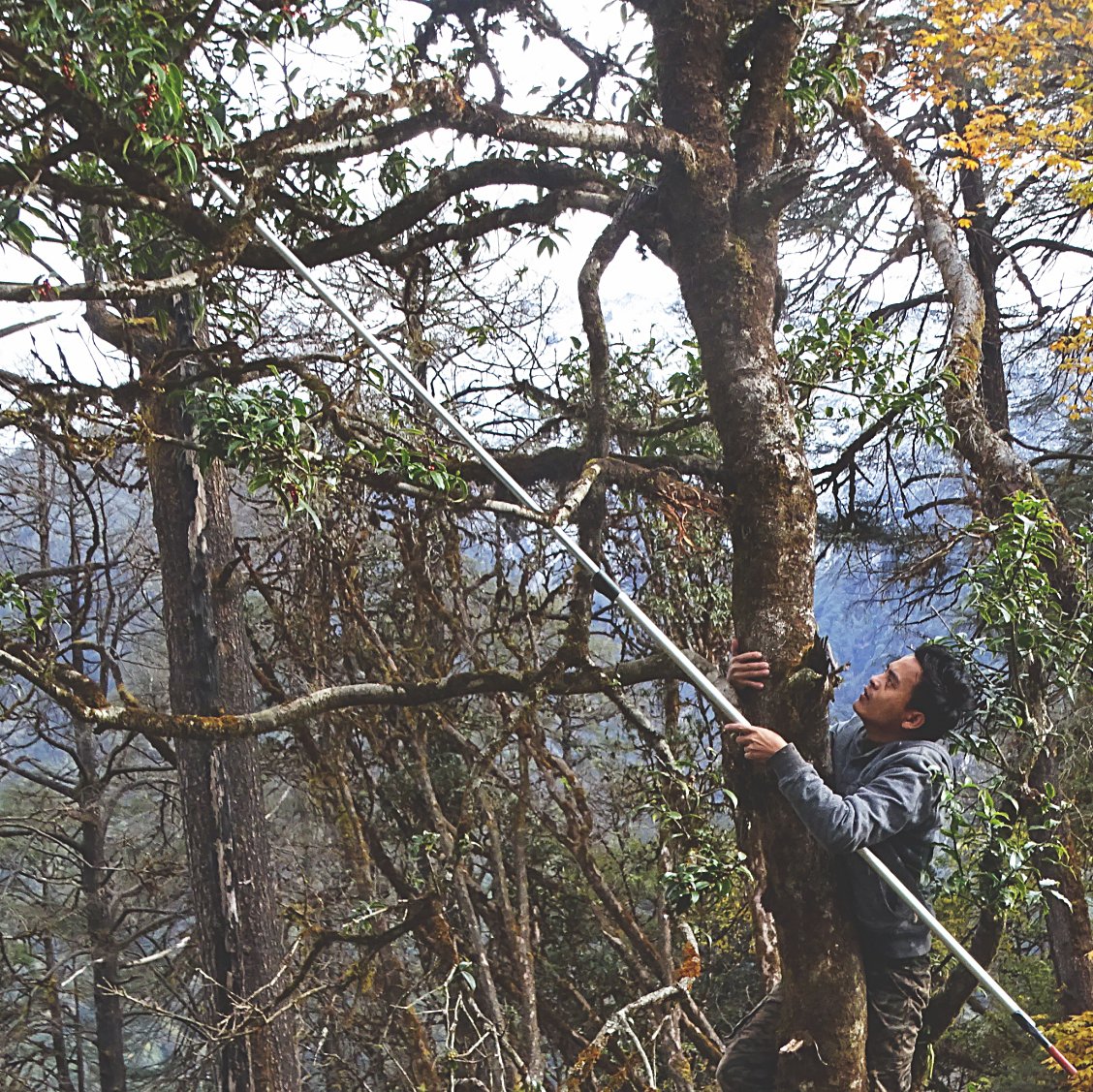
Collecting ilex seeds in Bhutan
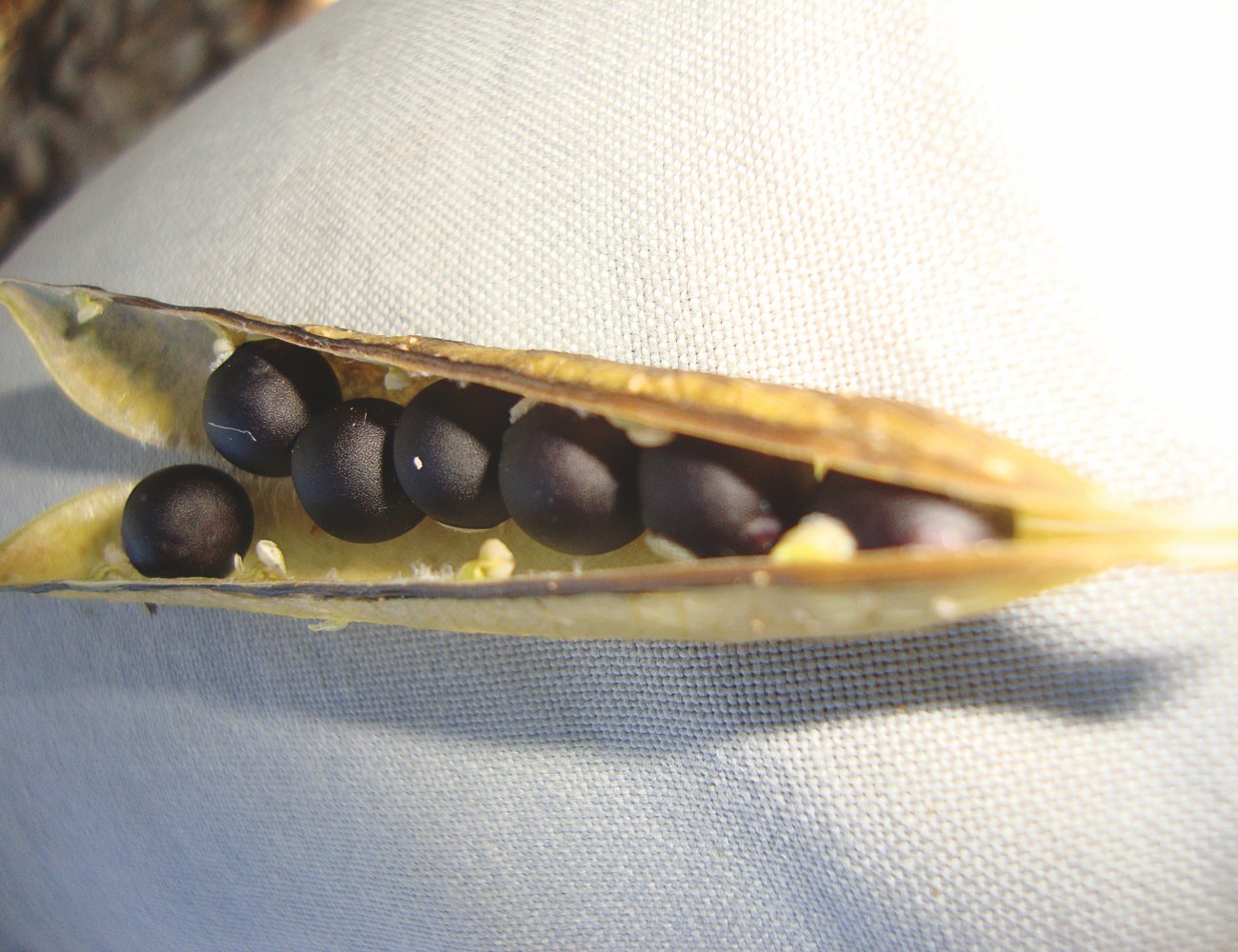
A mature pod of Pisum Sativum, a type of wild pea
When he joined the staff at Kew 42 years ago, it was something like a British government department. “I had to sign the official secrets act and everything.” These days, a lot more of his time is spent applying for funding and bidding for research grants.
“Public engagement can help us in that capacity,” he says. “We may have missed a trick for a long time, selling Kew to people as a pretty garden rather than a scientific facility doing research that might do some serious good. These are the nuts and bolts of conservation, and it’s not just about biology. It’s philosophy, politics, economics. When it comes to climate change, food security and water security, there will be plant-based solutions and that is what we do.”
